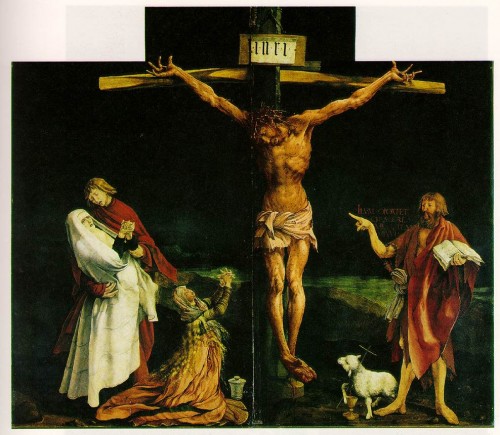[ by Charles Cameron — cross-posted from Zenpundit — see also part I: Scenario planning the end times ]
*
Today I received a book in the mail from Powell’s: C Christine Fair and Sumit Ganguly‘s Treading on Hallowed Ground: Counterinsurgency operations in Sacred Spaces. That covers the spread of my interests pretty concisely. I’m reminded that Dietrich Bonhoeffer, the German theologian who was complicit in several attempts to assassinate Hitler, once said, “Only he who cries out for the Jews may sing Gregorian chants” – again, the intersection of the sacred and harsh “facts on the ground”.
I am interested in this intersection partly because my father was a warrior and my mentor a priest and peace-maker, and partly because that mentor, Fr. Trevor Huddleston CR, taught me to anchor my life in the contemplative and sacramental side of things, then reach out into world with a view to being of service – an idea that he movingly expressed in this key paragraph from his great book, Naught for your comfort:
On Maundy Thursday, in the Liturgy of the Catholic Church, when the Mass of the day is ended, the priest takes a towel and girds himself with it; he takes a basin in his hands, and kneeling in front of those who have been chosen, he washes their feet and wipes them, kissing them also one by one. So he takes, momentarily, the place of his Master. The centuries are swept away, the Upper Room in the stillness of the night is all around him: “If I, your Lord and Master, have washed your feet, ye ought also to wash one another’s feet.” I have knelt in the sanctuary of our lovely church in Rosettenville and washed the feet of African students, stooping to kiss them. In this also I have known the meaning of identification. The difficulty is to carry the truth out into Johannesberg, into South Africa, into the world.
A few days ago I saw a film that encompasses that same range – from the contemplative to the brutal – telling the story of the Cistercian (Trappist) monks of Tibhirine in the Atlas mountains of Algeria, the warmth of affection that existed between them and their Muslim neighbors, the mortal threat they came under from Muslim “rebels” whose wounded they had cared for, their individual and group decisions to stay there in Tibhirine under those threats, and their eventual deaths.
*
It is an astonishing story, and my copy of John Kiser‘s book, The Monks of Tibhirine: Faith, Love and Terror in Algeria, which also tells that story, already has more tabs in it noting phrases and whole paragraphs I’ll want to return to than any altar missal – and I’m only two-thirds of the way through it.
I don’t wish to retell the story – I’d rather you saw the film, Of Gods and Men, in the theater if possible, on DVD if not, or read the book, or both – but a few of those book-marked passages stand out for me.
Read more


